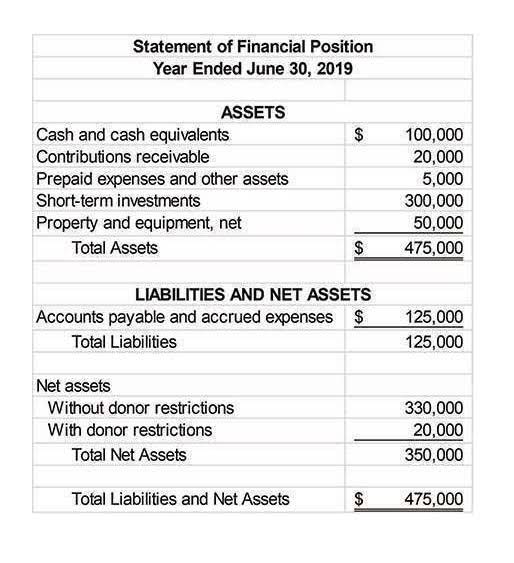
In case of long-term contracts, accountants need a basis to apportion the total contract revenue between the multiple accounting periods. Percentage of completion method provides contribution margin one of those bases, other being full-contract method. Instead of costs, percentage of completion can also be calculated using units or labor hours, depending on the nature of the business.
- For example, if a project involves delivering 100 units, and 50 units have been delivered, the percentage of completion will be 50%.
- Suppose a business has a long term construction project and has incurred costs to date of 300.
- Percentage of completion method provides one of those bases, other being full-contract method.
- Percentage of completion method is vulnerable to abuse by unethical companies.
- To calculate the percentage of completion for a project, there are three indicators contractors can use.
- If you do need to make those overbilling or underbillings you will need to do them with a journal entry.
Manage Your Business Cash Flow
In many cases, installing utilities, such as water or electricity, is only one part of a larger construction project. Milestone billing can be a great way to ensure you receive payment for this work as the job progresses. While highly structured and standardized, progress billing requires meticulous attention to detail from contractors. If a job costing system isn’t in place, progress billing, especially AIA-style progress billing, can become a massive undertaking.

ASC 606 Revenue Recognition Guide: What It Is, Methods, Standards And How-Tos
For example, if a stakeholder requests a financial summary midway through a project, you can provide accurate, data-driven reports that reflect both progress and profitability. This transparency builds trust and strengthens relationships with key stakeholders, ultimately leading to more opportunities. Changes in the contract can also pose a challenge when using the percentage of completion formula. For example, if the scope of the project changes, it can be difficult to determine the degree of completion accurately.
- It is also used to estimate the time and resources needed to complete the project.
- Calculating the percentage of completion in Excel can be a useful tool for tracking progress on projects or tasks.
- However, it also has some limitations and may not be suitable for all projects.
- Based on the percentage of completion calculated using cost date we determine than revenue of $62.5 million has been earned (31.25% multiplied by $200 million total contract value).
- Accurately calculating the effects of these changes is essential to stay within budget.
- In this section, we will discuss some of the most common challenges and provide insights on how to overcome them.
Get out of spreadsheets and workarounds. Get back to accounting.

If so, try RightRev to make the entire process of POC calculation far faster and easier. Accurate POC recognition hinges on reliable data, and when you’re reporting 116% of your project as completed over a single year, it’s obvious something is amiss in your calculations. The POC approach gives your company and its interested parties a more accurate percentage of completion formula snapshot of your current finances. It can be desirable, and often, it makes all the difference between a black or red financial statement. In this completion method, we compare the total estimated effort with the actual effort expended to date. We will explore three methods for calculating percent completion based on distinct scenarios.


Calculating the percentage of completion accurately is crucial for businesses that offer long-term projects or services. It helps in tracking the progress of the project, determining the revenue recognition, and forecasting the financial impact of the project. There are three methods of calculating the percentage of completion, namely, cost-to-cost method, units-of-delivery method, and surveys-of-work-completed method. Businesses must choose the method that best suits their project and ensures that the percentage of completion is calculated accurately. This calculating percentage completion compares the costs incurred to date with the total estimated costs of the project to calculate the percentage of completion. It is widely favored in construction accounting for its simplicity and direct correlation to expenses.
- The percentage of completion formula is a crucial tool for calculating revenue accurately in a project.
- This ensures the accuracy of their accounting calculations, and helps to avoid cash flow challenges.
- Many of these tools deliver real-time data, which gives a more accurate rendering of percent complete.
- Finally, compliance with accounting standards can also be a challenge when using the percentage of completion formula.
- Knowing the percentage of completion approach is essential for precise financial management.
- The best option for revenue recognition depends on the nature of the project and the industry in which the company operates.
- Undoubtedly, the most precise approach among the three is the first method, which relies on quantitative data analysis.
- In the construction industry, the percentage of completion formula is used to calculate the progress of a construction project.
- There are two main conditions for the use of the percentage of completion method.
- By measuring progress with KPIs, you can identify areas that need improvement and take corrective action.
The percent complete is how much the bar is filled in or shaded, depending on the tool you’re using. We have a dataset of some Student Names and their Obtained Marks in multiple subjects, as well as the highest Total Marks. Bakery Accounting We will calculate the percentage marks of the total attainable marks for each student. “Our financial reporting is synced and seamless between companies so it all looks the same. It helps me in presenting financials to the ownership on what to look for, what to call out, what to show them.”

